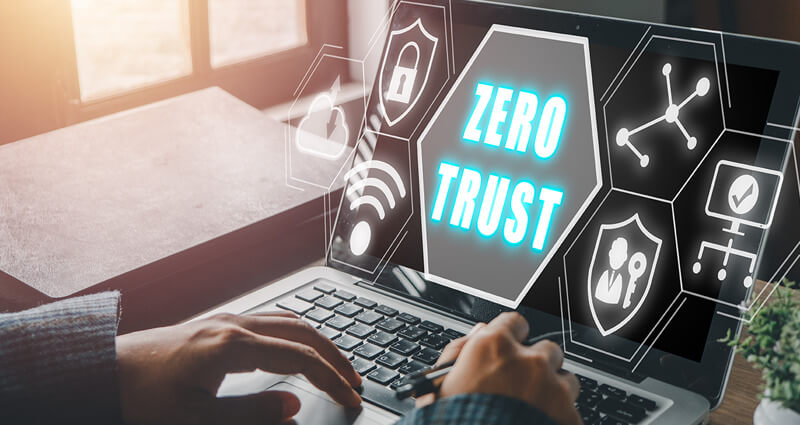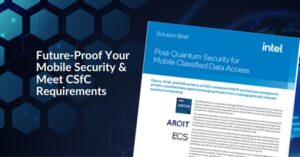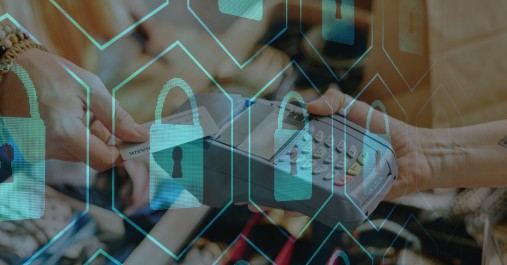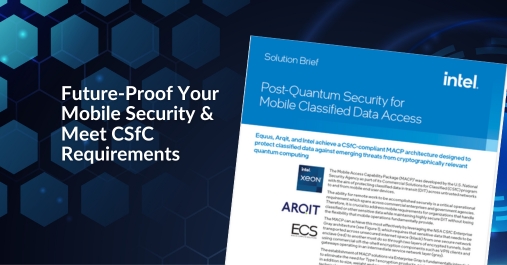Every minute, there are 2,645 phishing attacks. Their prevalence means that companies can’t content themselves with playing defense. They need strategies that proactively protect their network, stopping cyberattacks before they start. Zero Trust security came about as a potential solution.
Imagine hosting a house party where everyone can access every room — your bedroom, office, even your attic. Unsettling, right? Now, envision that each room has its own lock, ensuring that uninvited guests have limited access. Sounds much better, right?
This scenario describes the premise of Zero Trust security — helping us perform a mental comparison between it and traditional network security. We’ll dive into the Zero Trust approach so you can see how it protects data center infrastructure.
Zero Trust: What Is It?
Born out of a growing need to mitigate internal and external cyber threats, Zero Trust is a cybersecurity philosophy based on a simple principle: “Never trust, always verify.” Unlike traditional models, Zero Trust treats every user and device, whether inside or outside the network, as a potential threat. It employs three overarching strategies to keep your network secure.
1. Principle of Least Privilege (PoLP): The Smallest Key Concept. At your house party, you’d give keys to your guests based on their needs. If your friend only needs to use the restroom, they don’t need a key to your bedroom, right? PoLP applies this logic to cybersecurity — each user should have just enough access to perform their tasks and nothing more.
2. Micro-segmentation: Dividing the House. Zero Trust also introduces the concept of micro-segmentation — breaking up security perimeters into small zones. As you might keep the main floor and the second level of your house separate for a party, micro-segmentation maintains separate access for different parts of the network. If intruders get into one area, they’re still locked out of the rest.
3. Multi-factor Authentication (MFA): The Key and Password Combo. Like needing both a key and a password to open a door, MFA is an authentication method requiring a user to provide two or more pieces of evidence before gaining access. It’s another layer of protection that confirms only the right people have access to your system.
Cybercriminals break into your system by first finding the most accessible way in. Once they’re inside, accessing sensitive parts of your system is much easier. Zero Trust ensures that even if a cyberattack is successful, bad actors are limited to a confined area — giving your team precious time to identify and mitigate the threat.
Embracing Zero Trust: A 5-Step Guide

As cyber threats become more sophisticated, robust and comprehensive security strategies like Zero Trust are indispensable. Consider five steps you can take to start implementing it in your organization.
Step 1: Identify Sensitive Data. Your organization’s most critical and sensitive data (the ‘crown jewels’) needs the highest level of protection. Start by conducting a comprehensive data audit to identify what kind of data you have, where it resides, who has access to it, and what levels of protection are currently in place.
Step 2: Map the Transaction Flows. Once you’ve identified your sensitive data, you must understand how it moves within your organization. Who accesses it? When? Why? Are there times when large volumes of data are transferred or when it moves outside your organization? Flow mapping can help you identify potential vulnerabilities that need additional protection.
Step 3: Build a Zero Trust Architecture. Your Zero Trust architecture should be centered around your data priorities and their pathways, considering principles like the Principle of Least Privilege and micro-segmentation. Network security technologies, such as next-generation firewalls, network segmentation gateways, and secure access service edge (SASE) solutions, will play key roles here. Also, consider solutions for endpoint security, identity access management (IAM), and secure web gateways.
Step 4: Continually Monitor and Log. A Zero Trust approach is more than just a one-and-done deal; it requires constant vigilance. Implementing continuous monitoring and automated logging tools can help keep an eye on user behaviors and activities. Any anomalies or suspicious activity should trigger alerts. This step is crucial for your Zero Trust strategy, enabling you to identify and respond to potential threats quickly.
Step 5: Improve and Adjust. After the initial setup, continuous improvement will keep your security updated with current threats. Regular security audits, risk assessments, and user feedback can offer valuable insights when making these improvements.
With its ‘trust no one’ mantra, Zero Trust offers a valuable blueprint for bolstering your organization’s cybersecurity defenses. Check out our previous post, where we dig into why Zero Trust is key to the modern workplace and remember the phrase, ‘Never Trust, Always Verify’!








